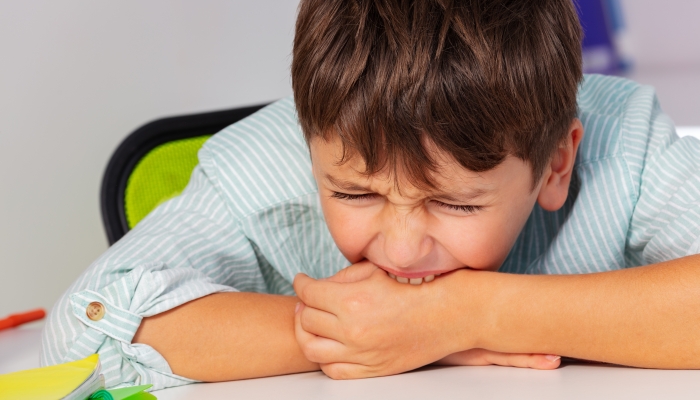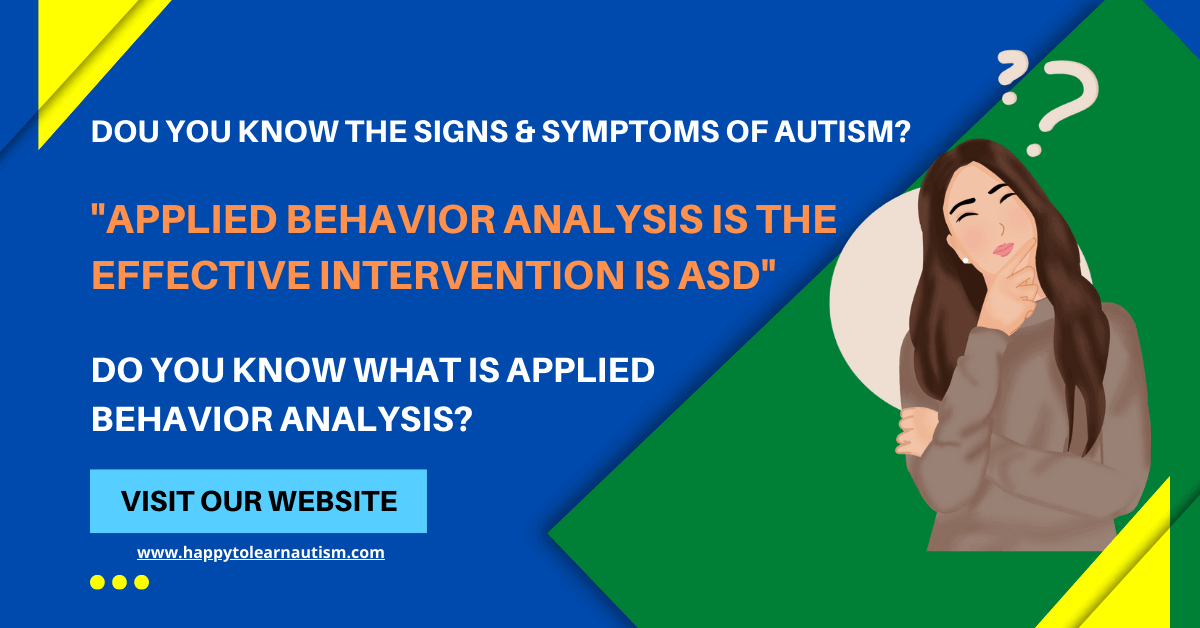Daily life hacks that Autism Spectrum Therapies professionals swear by
Recognizing the Effect of Behavioral Autism on Day-to-day Live and Social Interactions
You may not understand just how deeply behavioral autism affects everyday life and social interactions. Individuals on the spectrum frequently browse a globe loaded with interaction obstacles and sensory overload. These difficulties can lead to disappointment and isolation, impacting their partnerships and general wellness.
Specifying Behavioral Autism and Its Qualities
Behavior autism, often referred to as autism spectrum condition (ASD), incorporates a variety of problems characterized by challenges in social interaction, communication, and repeated behaviors. You could notice that individuals with ASD commonly battle to analyze social hints, which can result in misunderstandings in conversations. They may locate it hard to establish eye call or take part in tiny talk, making social circumstances feel frustrating.
Communication difficulties can materialize in various ways, from postponed speech development to a choice for making use of fewer words. Repetitive actions, such as hand-flapping or shaking, can serve as coping devices to handle tension or sensory overload. These features can profoundly affect everyday life, making it necessary for you to recognize and sustain those with ASD. By recognizing these qualities, you can cultivate an environment that advertises acceptance and motivates reliable communication, assisting people with autism prosper in their day-to-day communications.
The Spectrum of Autism: Recognizing Irregularity in Behavior
Autism spectrum problem (ASD) isn't a one-size-fits-all diagnosis; it differs extensively amongst people. You might experience individuals that are very verbal and engage quickly in conversations, while others could favor singular activities or communicate non-verbally.
Moreover, the means individuals with ASD respond to sensory input can differ considerably; some might be bewildered by loud noises or intense lights, whereas others prosper in stimulating settings. The spectrum likewise consists of differences in social communications; some individuals might have a hard time to translate social hints, while others navigate social settings with loved one ease. Understanding this irregularity is essential, as it assists you value each person's unique experience and dressmaker support to their particular demands, promoting a more inclusive setting for everybody.
Interaction Difficulties Encountered by People With Autism
When you interact with people on the autism range, you might see their distinct interaction difficulties. They often face difficulties with both verbal and nonverbal cues, which can impact their social interactions. Recognizing these barriers is vital for promoting far better connections and support.

Verbal Interaction Problems
Several individuals on the autism range experience verbal interaction difficulties that can considerably impact their day-to-day communications. Your pace, tone, or volume could not line up with social expectations, creating others to misinterpret your intents. Identifying these difficulties can help you and your support network develop approaches to boost communication and foster far better connections with others in your day-to-day life.
Nonverbal Communication Obstacles
Spoken communication isn't the only difficulty people on the autism spectrum face; nonverbal interaction barriers can be just as considerable. These challenges can lead to misunderstandings or false impressions of social cues, making communications really feel complex or overwhelming. By resolving nonverbal interaction, you can locate methods to boost your social experiences and enhance your total top quality of life.
Social Communication Influences
Social interactions can frequently really feel frustrating because of the special interaction difficulties dealt with by people with autism. You might have problem with analyzing social cues, making it tough to comprehend sarcasm or body movement. This can lead to misunderstandings or unpleasant moments in discussions. Furthermore, initiating and preserving conversations may feel tough, creating stress and anxiety in social scenarios. You might choose structured settings, making spontaneous interactions awkward. It's additionally usual to experience trouble in participating in tiny talk, which can impede creating new friendships. Acknowledging these challenges can aid you discover approaches to boost communication, such as exercising social abilities in safe settings or making use of visual aids - Autism Therapist. Comprehending your demands enables you to browse social interactions with better self-confidence and ease.
Social Communication and Relationship Building in Autism
While structure partnerships can be challenging for individuals with autism, comprehending their special point of views and communication styles can promote purposeful connections. You might observe that lots of people on the range like direct communication and might deal with social cues or tiny talk. By being simple in your communications, you can assist produce a setting where they feel comfortable.
Make the effort to observe and pay attention exactly how they share themselves. This insight can lead you in steering discussions a lot more effectively. Taking part in shared interests can also serve as a bridge to deeper connections. Whether it's a leisure activity, a favorite show, or a common passion, these common threads can open doors to friendship.
Daily Life Regimen: Navigating Approaches and challenges
Navigating day-to-day life routines can be specifically testing for individuals with autism, particularly when unexpected modifications take place. To navigate these obstacles, take into consideration executing visual timetables or lists.
Developing a routine that consists of sensory breaks can also be useful. This helps produce an understanding atmosphere.
Finally, technique mindfulness methods to manage anxiety and anxiousness. Basic breathing exercises or basing strategies can directory make a significant difference. By integrating these strategies, you can enhance your everyday regimen and decrease disturbances, making life really feel much more manageable.
Staminas and Capacities of Individuals on the Autism Range
Recognizing daily life routines is simply one element of the autism experience. Lots of individuals on the autism spectrum have amazing staminas and capabilities that establish them apart. You could locate that your interest to information is exceptional, enabling you to stand out in tasks that need accuracy and focus. Your capability to think outside the box can cause ingenious solutions in numerous scenarios.
In addition, your memory abilities often radiate, particularly in areas of interest. Autism Spectrum Therapies. This flair for maintaining info can make you an important source in fields like scientific research, innovation, or art. You might likewise exhibit strong visual reasoning, enabling you to visualize complex principles and fix troubles artistically
Furthermore, your distinct point of view on the world can foster compassion and understanding in others, enriching social communications. Accepting these toughness not just boosts your self-confidence but likewise helps others value the diverse talents you give the table.
Creating Inclusive Atmospheres for Individuals With Autism
Producing inclusive settings for people with autism begins with designing sensory-friendly rooms that accommodate their unique requirements. You can also cultivate possibilities for social interaction, aiding to build friendships and connections. By making these adjustments, you'll add to a more inviting atmosphere for everyone.
Creating Sensory-Friendly Spaces
While designing sensory-friendly rooms, it's vital to assess the unique demands of people with autism. Start by choosing relaxing colors and soft lights to create a comforting atmosphere. Include peaceful zones where people can pull back and charge when bewildered. You'll intend to minimize loud sounds and interruptions, making use of soundproof products or white sound makers to help preserve serenity. Consider tactile aspects like soft materials or fidget-friendly objects that can provide convenience. Determine that spaces are flexible, permitting very easy rearrangement to accommodate various activities. Include visual schedules or clear signs to assist individuals navigate the space confidently. By thoughtfully integrating these elements, you can create a welcoming atmosphere that supports sensory demands and advertises total wellness.
Promoting Social Interaction Opportunities
Designing sensory-friendly rooms not just addresses specific convenience however also sets the phase for purposeful social interactions among people with autism. To advertise these communications, create inclusive settings that invite engagement. Organize organized tasks, like art courses or group video games, that motivate collaboration without frustrating sensory input. Use aesthetic help and clear interaction to assist everybody involve pleasantly. Motivate peer mentoring, matching individuals with autism with encouraging peers who can lead them with social situations. In addition, think about hosting routine neighborhood events that commemorate neurodiversity, fostering approval and understanding among all participants. By implementing these approaches, you can improve social possibilities, helping people with autism build friendships and reinforce their social skills YOURURL.com in a secure, welcoming atmosphere.

Frequently Asked Inquiries
How Can Buddies Support A Person With Behavioral Autism?
You can sustain a buddy with behavior autism by being person, paying attention actively, and appreciating their borders. Participate in activities they take pleasure in, connect honestly, and create a comfortable atmosphere where they really feel valued and recognized.
What Resources Are Readily Available for Moms And Dads of Children With Autism?
You can discover numerous resources for parents of kids with autism, including support system, instructional internet sites, and go to my blog regional social work. Linking with various other moms and dads can likewise offer important insights and shared experiences to aid navigate obstacles.
Can Behavioral Autism Modification Over Time?

Yes, behavioral autism can alter in time. You may observe shifts in interaction, social skills, and habits as your child grows. Early treatment and support frequently play vital functions in these developing changes.
Exactly How Do Sensory Level Of Sensitivities Affect Day-to-day Live?
Sensory level of sensitivities can make everyday experiences overwhelming. You might deal with bright lights or loud sounds, bring about tension or avoidance. Discovering atmospheres that suit your needs can greatly enhance your convenience and overall day-to-day life.
What Are Usual Misconceptions About Behavioral Autism?
You may assume behavior autism only impacts interaction abilities, but it's more complex. Numerous think people do not have empathy or intelligence, which isn't true. Comprehending these misunderstandings assists foster approval and support for those on the range.
Behavioral autism, usually referred to as autism spectrum disorder (ASD), encompasses a range of conditions characterized by challenges in social interaction, communication, and repetitive behaviors.Social interactions can frequently feel overwhelming due to the unique communication difficulties faced by individuals with autism.Creating sensory-friendly rooms not just addresses private convenience however likewise sets the phase for significant social interactions amongst individuals with autism. Urge peer mentoring, combining individuals with autism with supportive peers that can direct them with social circumstances. By carrying out these methods, you can boost social chances, helping people with autism build friendships and enhance their social abilities in a risk-free, welcoming setting.